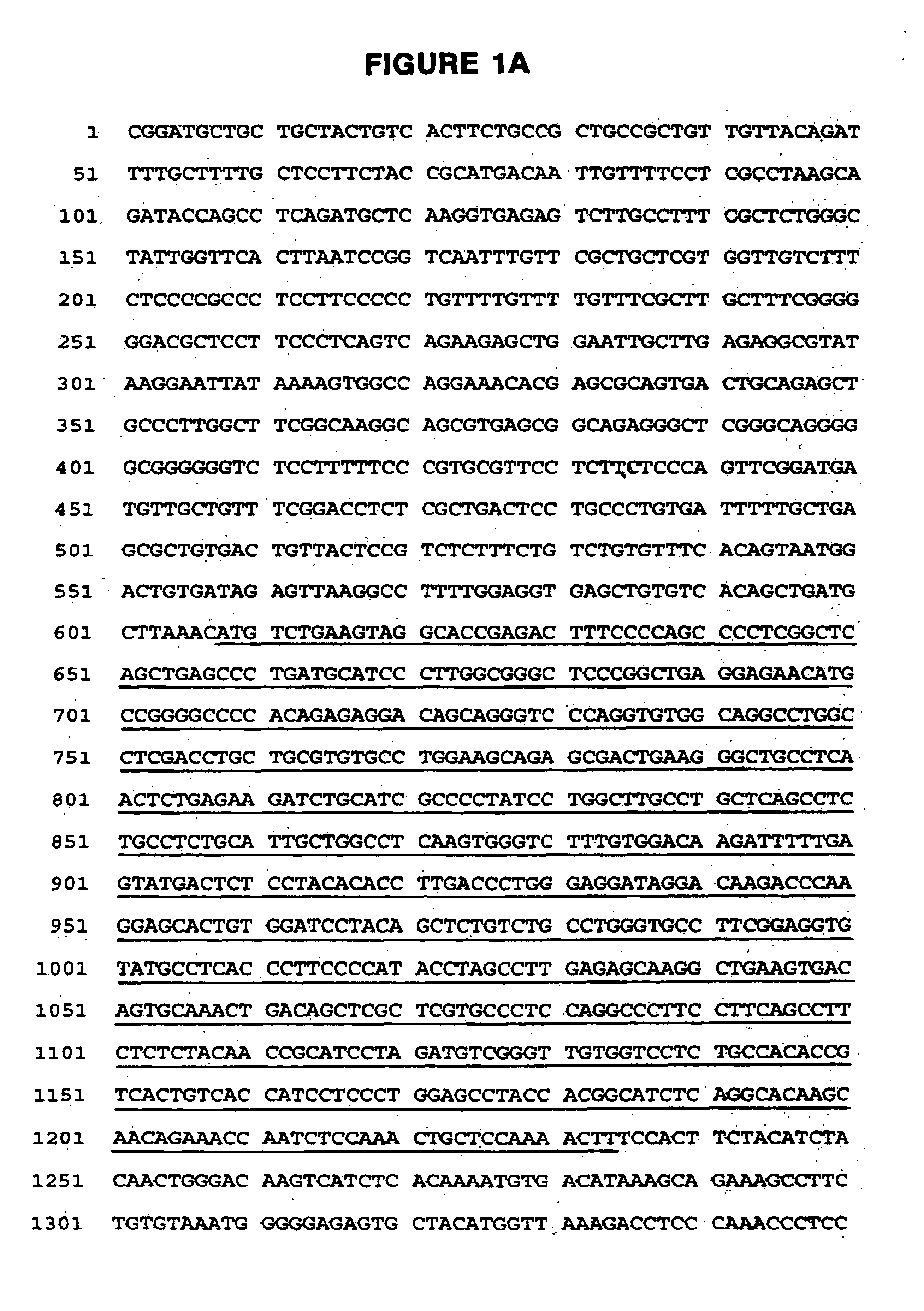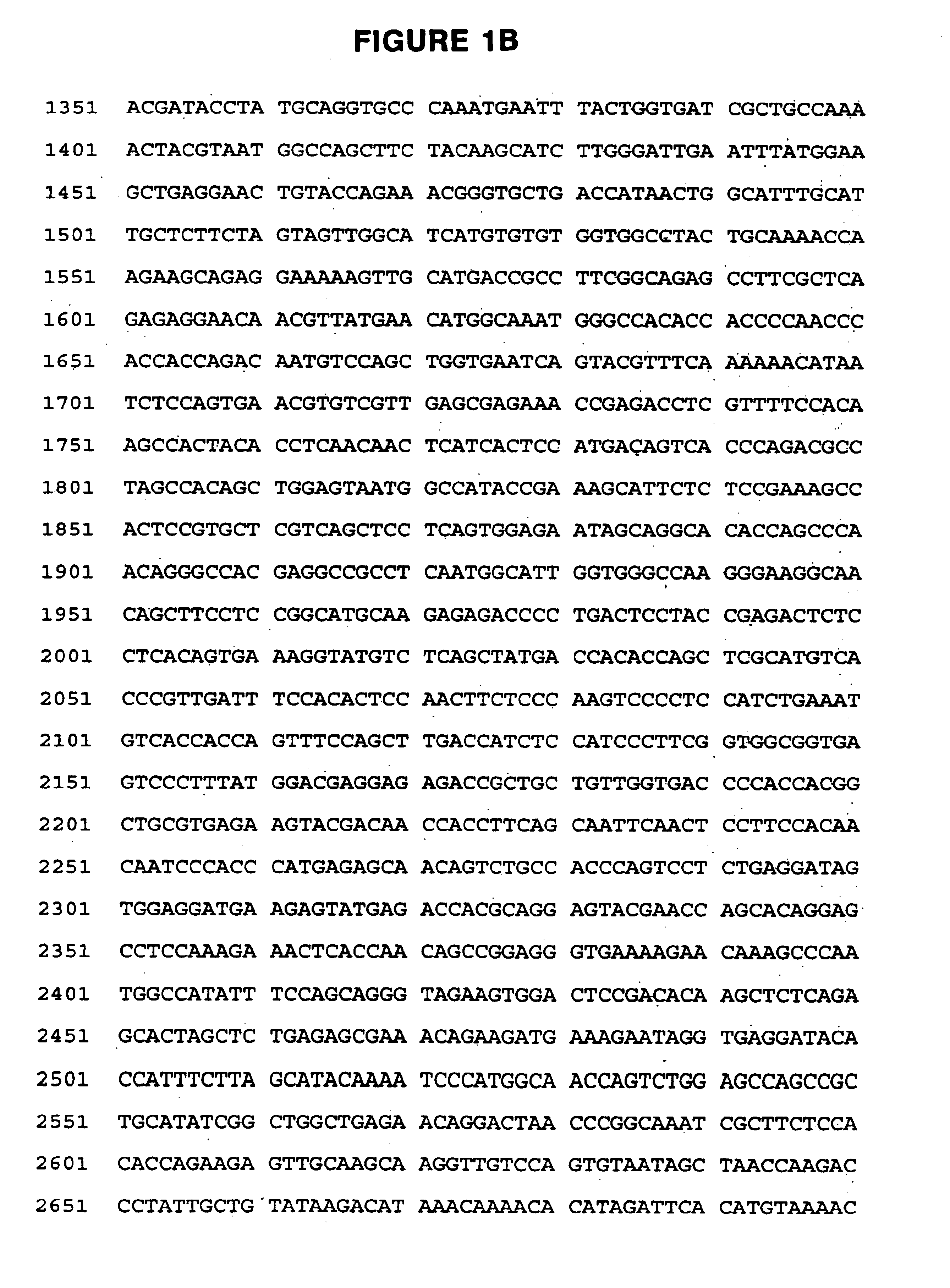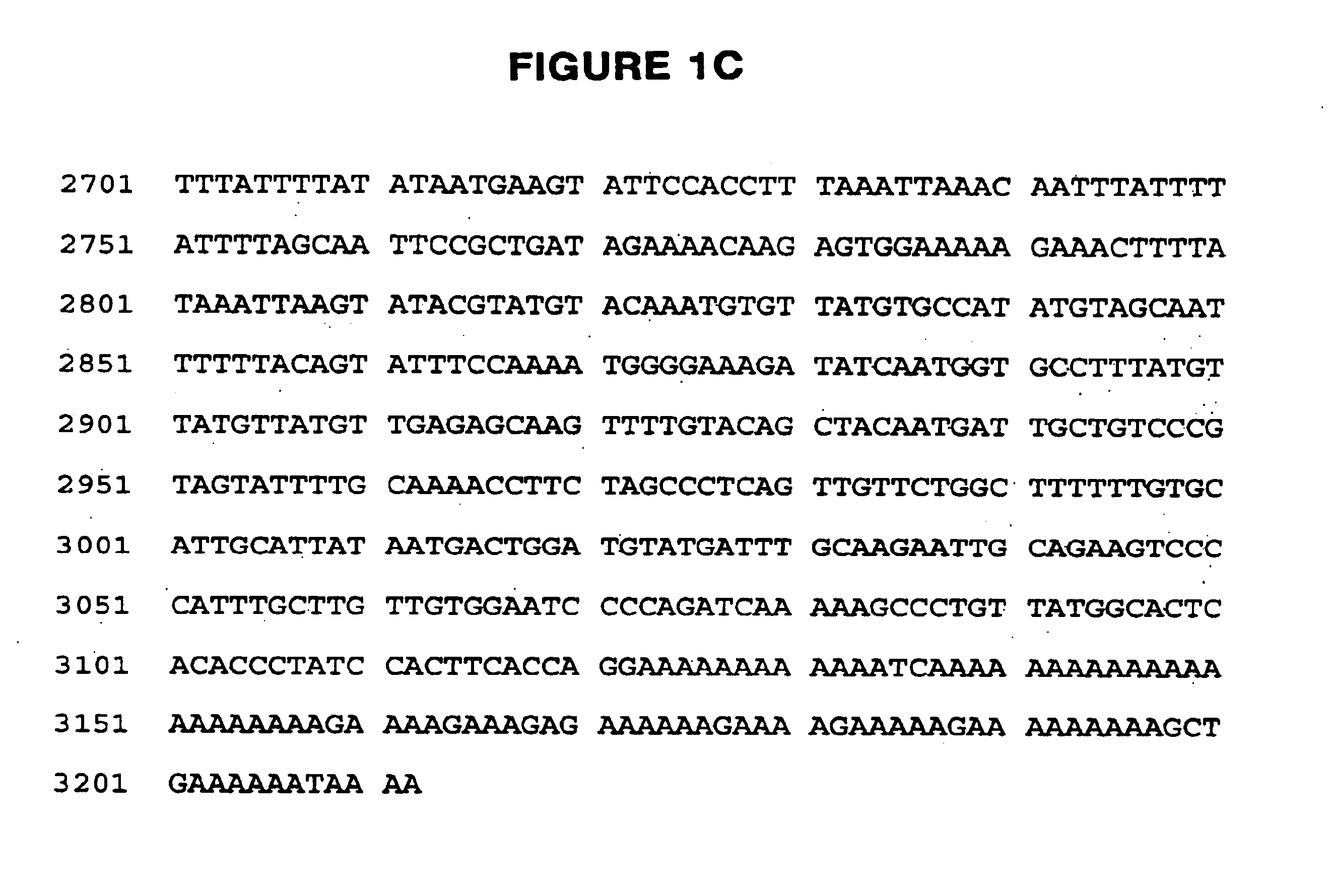A-form of cytoplasmic domain of nARIA (CRD-neuregulin) and uses thereof
a cytoplasmic domain and cytoplasmic domain technology, applied in the field of cytoplasmic domain of naria (crdneuregulin) and its use, can solve the problems of difficult study of embryonic ligand-gated channels and subsequent modifications of neural development functional profiles, little is known about the mechanism of these changes,
- Summary
- Abstract
- Description
- Claims
- Application Information
AI Technical Summary
Benefits of technology
Problems solved by technology
Method used
Image
Examples
example 1
Isolation and Sequence Analysis of nARIA
[0119]Novel members of the ARIA / NDF / heregulin family that would be expressed in neurons projecting to cholinoceptive neural targets were identified. Cloning efforts yielded 29 positives, including several which encoded variants with an entirely novel N-terminal sequence, distinguished by the absence of the usual Ig-like domains of the heregulin / NDF family. The predominance of the novel, Ig-less clones over the ARIA like clones was striking (11 vs 5 of 29 positives). We named the novel splice variant “nARIA” for neuronal nAChR Inducing Activity. All clones were isolated by two different and separate approaches as described below.
[0120]A different library was used in each screening protocol carried out to isolate and clone the nARIA gene. A chick E13 total brain cDNA library was screened with a rat DNA probe generated by PCR amplification. For the PCR amplification, degenerate primers corresponding to nucleotide sequences 523-542 (upper primer) ...
example 2
Spatial and Temporal Expression of nARIA in Chick Development
[0122]A chick E5-E11 spinal cord cDNA library which we prepared was also screened. The probe for screening was generated by RT-PCR amplification from E8 chick spinal cord total RNA using primers corresponding to nucleotide sequences 264-281 (upper primer) and 1294-1313 (lower primer) of the published ARIA sequence (Falls, et al., 1993). The amplified PCR fragment was subcloned into a PGEM3Z vector and sequenced to confirm its identity. Screening of the chick E5-11 spinal cord primary cDNA library by random primed labeling using the PCR fragment as the template resulted in 26 clones. Of these, 11 contained the novel cysteine rich domain (nARIA like clones), 6 clones contained the immunoglobulin-like domain (ARIA like splice forms), while the remaining clones had unidentifiable sequences. The nARIA clones included 8 that were identical to the form obtained by the earlier screening and 3 additional isoforms that differed in t...
example 3
Functional Analysis of Biological Activity—nARIA Activates Tyrosine Kinase Linked Receptor(s)
[0125]Initial experiments to characterize the functional properties of the nARIA protein focused upon the ability to activate protein tyrosine kinases. ARIA has been proposed to act, as other members of the NDF / heregulin family, through an interaction with specific tyrosine kinase-linked receptors (Falls, et al., 1993). This first step in transduction is assayed as tyrosine phosphorylation of a high molecular wight band, thought to represent phosphorylation of the receptor subunit(s). We examined the pattern of tyrosine phosphorylated proteins in extracts of lumbar sympathetic ganglia (LSG) neurons as well as several other cell lines with an anti-TYR-P antibody (4G10; UBI) (Ausubel et al., 1994; Falls, et al., 1993). Both recombinant ARIA an NARIA (from transiently transfected COS cells) induced time and dose dependent phosphorylation of 170-185 kD bands in the MCF7 and MDA-MB-453 cell lines...
PUM
| Property | Measurement | Unit |
|---|---|---|
| affinity | aaaaa | aaaaa |
| density | aaaaa | aaaaa |
| subunit composition | aaaaa | aaaaa |
Abstract
Description
Claims
Application Information
 Login to View More
Login to View More - R&D
- Intellectual Property
- Life Sciences
- Materials
- Tech Scout
- Unparalleled Data Quality
- Higher Quality Content
- 60% Fewer Hallucinations
Browse by: Latest US Patents, China's latest patents, Technical Efficacy Thesaurus, Application Domain, Technology Topic, Popular Technical Reports.
© 2025 PatSnap. All rights reserved.Legal|Privacy policy|Modern Slavery Act Transparency Statement|Sitemap|About US| Contact US: help@patsnap.com



